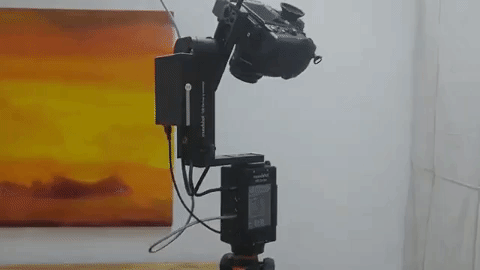Larry Strange was one of only 200 Google Trusted Photographers worldwide invited to The Street View Conference in London in September. The founder of Unified Web Media (UWM) in Wilmington is a prolific Google Earth contributor who is always looking for the next big thing in virtual reality technology.
“I attended the talk ‘The Future of Visuals at Google’ at the conference, and it validated our approach to high-quality image acquisition,” he said.
The approach, which has been developed along with Joe Del Tufo of Moonloop Photography, prioritizes ultra-high definition captures using the Seitz Roundshot VR Drive, a state-of-the-art Swiss device that helps photographers create high-quality spherical panoramas, or panospheres.
The device isn’t yet commonly used in the United States — in fact, according to Strange and Del Tufo, they use one of only two Roundshots in use in the U.S., acquired from a private seller in Boca Raton, Florida. In order to purchase the device, the seller had them travel to Boca Raton and learn to set it up and use it properly, a trip that proved to be well worth it.
“The quality of the images we get with this far exceeds the screens pretty much anyone has for viewing, including [VR headset] Oculus,” said Strange. “That was one of my questions going into the [Street View] conference — was that worth doing? And we found out that it was.”
For one thing, these high-quality images can “grow” with our devices as they’re upgraded. Your smartphone isn’t going to be able to display the full quality of the image today, but a device you buy in, say, 2024 — tech that isn’t commercially available yet — might. Images made at a quality more in line with current displays that look high quality now will become obsolete sooner, and will need to be reshot.
While Google Earth is all about keeping its images fresh, images that stay high quality longer are also a priority. It’s called “futureproofing” images. And just as it does with websites, Google uses algorithms to determine quality and gives the best (at least in theory) priority. Part of UWM’s business is working for clients who want the most optimized images of their businesses on Google; just as businesses use textual SEO on their websites, many are starting to use similar methods with images.
The Roundshot consists of a touchscreen, a light meter and a motorized arm that gives it a robot feel as it automatically turns 360 degrees. Shooting a panosphere takes from about two to seven minutes, depending on the number of shots taken. Generally, UWM uses a 20 millimeter lens and make 28 shots. It’s far lower than the 112 shots per panosphere the Roundshot is capable of, but the file sizes are more than their computers can handle.
This table shows the “sweet spot” they landed on, and how it compares to files made with 28 millimeter and 50 millimeter lenses:

“By comparison, most Unibody 360 cameras and the Matterport are only able to generate panospheres in the 8000 * 4000 range (32,000,000 pixels total) which is why our images are noticeably clearer,” Strange wrote in an email.
On an unseasonably warm October morning, Strange and Del Tufo demonstrated the tech in the Highlands’ Stapler Park near the UWM studio, for uploading to Google Earth. You can watch the whole process of setting up and capturing a shot here:
Here is the final panosphere on Google Earth, after color correcting the RAW files in Lightroom and stitching the shots together using PTGui Pro and submitting the file.
Google Earth is just one of the ways Roundshot VR captures can be applied. The definition is so detailed that it can be used to capture crime scenes in a way that wasn’t previously possible; it can keep perfect records of large collections for insurance purposes without spreadsheets; it makes super-realistic 300 dpi billboards possible. And the detail it can capture in VR tours of large spaces with high ceilings — such as The Grand — is game changing.
What’s next? A panosphere of the Wilmington skyline, as part of a contract with the Buccini Pollin Group.







